
Matilda of Ringelheim, also known as Saint Matilda, was a Saxon noblewoman. Due to her marriage to Henry I in 909, she became the first Ottonian queen. Her eldest son, Otto I, restored the Holy Roman Empire in 962. Mathilde founded several spiritual institutions and women's convents. She was considered to be extremely pious, righteous and charitable. Mathilde’s two hagiographical biographies and The Deeds of the Saxons serve as authoritative sources about her life and work.
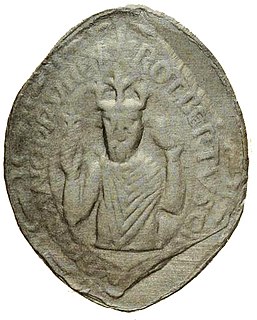
Robert II, called the Pious or the Wise, was King of the Franks from 996 to 1031, the second from the House of Capet. He was born in Orléans to Hugh Capet and Adelaide of Aquitaine. Robert distinguished himself with an extraordinarily long reign for the time. His 35-year-long reign was marked by his attempts to expand the royal domain by any means, especially by his long struggle to gain the Duchy of Burgundy. His policies earned him many enemies, including three of his sons. He was also known for his difficult marriages: he married three times, annulling two of these and attempting to annul the third, prevented only by the Pope's refusal to accept a third annulment.
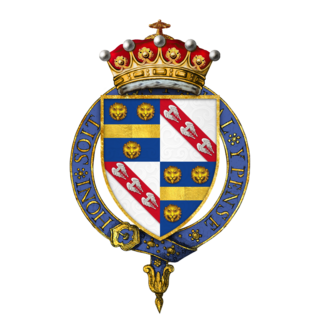
William de la Pole, 1st Duke of Suffolk,, nicknamed Jackanapes, was an English magnate, statesman, and military commander during the Hundred Years' War. He became a favourite of the weak king Henry VI of England, and consequently a leading figure in the English government where he became associated with many of the royal government's failures of the time, particularly on the war in France. Suffolk also appears prominently in Shakespeare's Henry VI, parts 1 and 2.

Hedwige of Saxony, a member of the Ottonian dynasty, was Duchess consort of the Franks by her marriage to the Robertian duke Hugh the Great. Upon her husband's death in 956, she acted as a regent during the minority of their son Hugh Capet, the founder of the Elder House of Capet.

Robert I, known as Robert the Old and "Old French: Tête-Hardi, lit. 'the Headstrong'", was Duke of Burgundy from 1032 to his death. Robert was the son of King Robert II of France and Constance of Arles. His brother was Henry I of France.

Liudolf was a Carolingian office bearer and count in the Duchy of Saxony from about 844. The ruling Liudolfing house, also known as the Ottonian dynasty, is named after him; he is its oldest verified member.
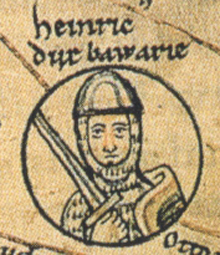
Henry I, a member of the German royal Ottonian dynasty, was Duke of Bavaria from 948 until his death.
Aénor of Châtellerault Duchess of Aquitaine was the mother of Eleanor of Aquitaine, who became one of the most powerful women in Europe of her generation.

Otto I, called Otto of Worms, a member of the Salian dynasty, was Duke of Carinthia from 978 to 985 and again from 1002 until his death.

Otto I was Count of Burgundy from 1190 to his death and briefly Count of Luxembourg from 1196 to 1197. He was the fourth son of Frederick I, Holy Roman Emperor, by his second wife Beatrice I, Countess of Burgundy, daughter of Count Renaud III.

William II, called the Pious, was the Count of Provence.
Matilda, also known as Mathilda and Mathilde, was a German regent, and the first Princess-Abbess of Quedlinburg. She served as regent of Germany for her brother during his absence in 967, and as regent during the minority of her nephew from 984.
Lambert of Chalon was the count of Chalon from 956 to 978, and count of Autun.

Edmund Beaufort, 2nd Duke of Somerset, KG, was an English nobleman and an important figure in the Hundred Years' War. His rivalry with Richard, Duke of York was a leading cause of the Wars of the Roses.
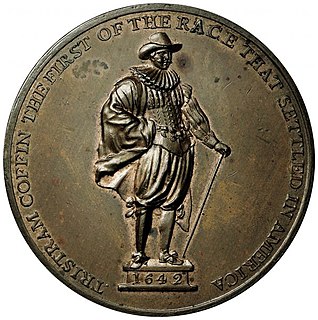
Tristram Coffin was an immigrant to Massachusetts from England. In 1659 he led a group of investors that bought Nantucket from Thomas Mayhew for thirty pounds and two beaver hats. He became a prominent citizen of the settlement. A great number of his descendants became prominent in North American society, and many were involved in the later history of Nantucket during and after its heyday as a whaling center. Almost all notable Americans with roots in Nantucket are descended from Tristram Coffin, although Benjamin Franklin was an exception.
Carmela Teoli was an Italian immigrant, a mill worker that worked in Lawrence, Massachusetts, whose testimony before the U.S. Congress in 1912 called national attention to unsafe working conditions in the mills and helped bring a successful end to the "Bread and Roses" strike. Teoli had been scalped by a cotton-twisting machine at the age of 13, requiring several months of hospitalization.
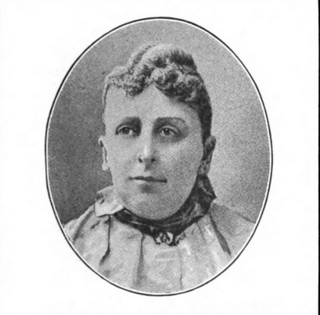
Harriet Abbott Lincoln Coolidge was an American philanthropist, author and reformer. She did much in the way of instructing young mothers in the care and clothing of infants, and furthered the cause to improve the condition of infants in foundling hospitals. She contributed a variety of articles on kindergarten matters to the daily press, and while living in Washington D.C., she gave a series of "nursery talks" for mothers at her home, where she fitted up a model nursery.

Mary E. C. Bancker was an American author.
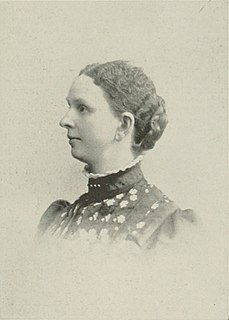
Mary Traffarn Whitney was an American minister and editor, as well as a social reformer, philanthropist and lecturer. She was one of the early Universalist women ministers, later changing her association to that of the Unitarian church.

Margaret Hunt Brisbane was an American poet. A native of Vicksburg, Mississippi, she came of a literary ancestry. She was married in 1883, and for many years made her home in New Orleans. Brisbane wrote for national magazines and New Orleans newspapers.